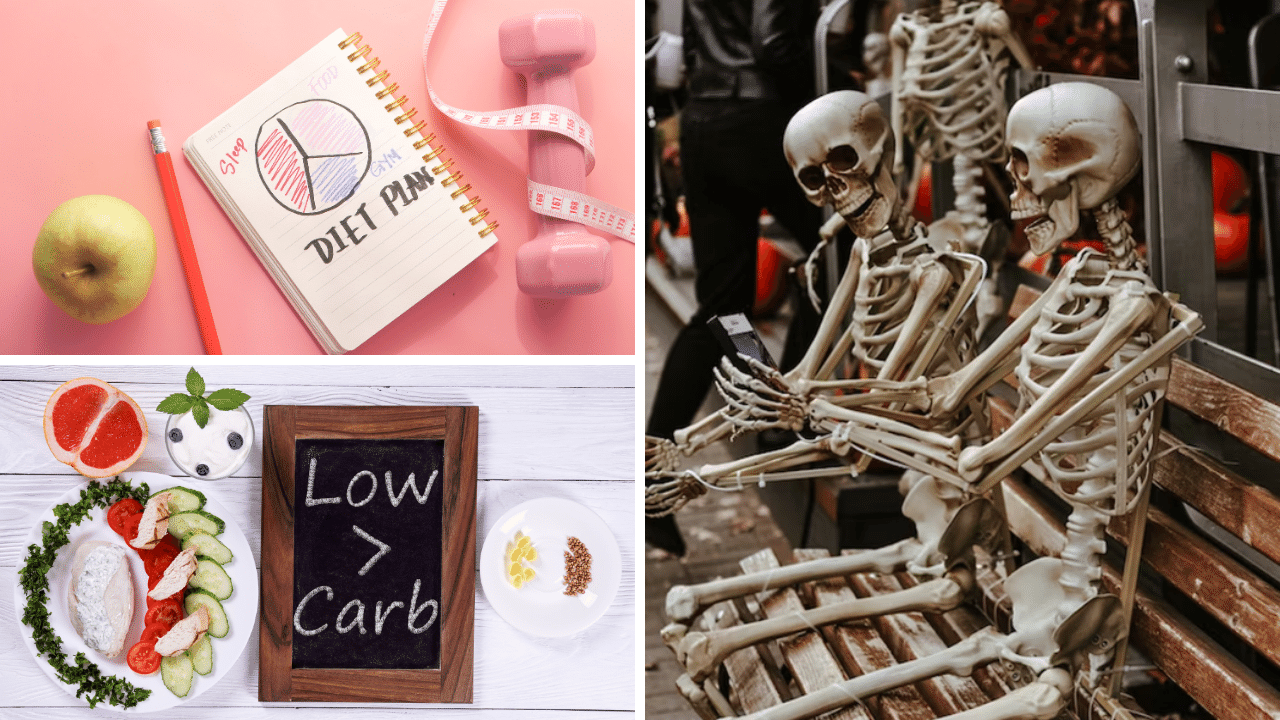In the ever-evolving world of nutrition, one dietary approach has captured the hearts and waistlines of many health-conscious individuals: low-carb diets. Whether you're looking to shed those extra pounds, stabilize your blood sugar levels, or simply improve your overall health, a low-carb diet can be a powerful tool in your wellness arsenal. In this comprehensive guide, we'll walk you through the ins and outs of low-carb eating, provide you with practical tips to navigate the challenges, and empower you to make informed choices for your health journey.
What Is a Low-Carb Diet?
A low-carb diet is exactly what it sounds like: a dietary plan that restricts the intake of carbohydrates while emphasizing other nutrient-rich foods like proteins, healthy fats, and non-starchy vegetables. The primary goal of a low-carb diet is to reduce the body's reliance on glucose (sugar) for energy, forcing it to burn stored fat instead. This metabolic shift can lead to numerous health benefits, including weight loss, improved blood sugar control, and increased energy levels.

Benefits of Low-Carb Diets
1. Weight Loss: One of the most compelling reasons people turn to low-carb diets is their effectiveness in promoting weight loss. By restricting carbohydrates, you reduce the body's insulin response, making it easier to burn stored fat for energy. Many studies have shown that low-carb diets can lead to significant weight loss, often more so than low-fat diets.
2. Blood Sugar Control: Low-carb diets can be particularly beneficial for individuals with diabetes or prediabetes. By minimizing sugar spikes, these diets help stabilize blood sugar levels and reduce the need for insulin or other medications.
3. Improved Cardiovascular Health: Contrary to some misconceptions, low-carb diets can also improve heart health. They often lead to lower triglyceride levels, higher HDL (good) cholesterol, and reduced blood pressure.
4. Increased Satiety: Low-carb diets tend to be more filling, which can help control appetite and reduce overall calorie intake. This can be a game-changer for those struggling with portion control.
5. Enhanced Mental Clarity: Some individuals report improved mental clarity and focus on a low-carb diet, possibly due to the steady supply of energy from fats.
Common Challenges and How to Overcome Them
1. Carb Cravings: Cutting carbs can be challenging, especially if you're used to a diet rich in bread, pasta, and sweets. To combat cravings, keep healthy low-carb snacks on hand. Opt for nuts, seeds, and cheese as satisfying alternatives.
2. Social Situations: Dining out or attending social gatherings can be daunting when you're on a low-carb diet. To navigate these situations, research restaurant menus in advance, make special requests, and don't be afraid to share your dietary preferences with friends and family.
3. Keto Flu: Some people experience flu-like symptoms, known as the "keto flu," when they first start a low-carb diet. This is often due to electrolyte imbalances. To prevent or alleviate keto flu, ensure you're getting enough sodium, potassium, and magnesium through your diet or supplements.
4. Plateau: Weight loss plateaus can be discouraging. To overcome them, consider incorporating intermittent fasting or adjusting your macronutrient ratios. Adding more non-starchy vegetables to your meals can also help.
5. Boredom: Eating the same low-carb meals day in and day out can become monotonous. Keep things interesting by trying new recipes and experimenting with different herbs and spices to add flavor without adding carbs.

Low-Carb Diet Variations
There are several low-carb diets to choose from, each with its own unique approach and level of carb restriction. Here are a few popular options:
1. Keto Diet: The ketogenic diet is the most restrictive, with a focus on extremely low-carb, high-fat intake. This diet aims to induce a state of ketosis, where the body primarily burns fat for fuel.
2. Low-Carb, High-Fat (LCHF) Diet: LCHF diets emphasize healthy fats, moderate protein, and reduced carbs. They allow for a wider variety of foods compared to keto but still keep carb intake relatively low.
3. Paleo Diet: The paleo diet eliminates processed foods, grains, and legumes while promoting whole foods like lean meats, fish, vegetables, and fruits. While not strictly low-carb, it naturally reduces carb intake by excluding grains and refined sugars.
4. Atkins Diet: The Atkins diet is divided into phases, gradually increasing carb intake as you progress. It starts with a very low carb intake and aims to find the right carb level for your body.

Tips for Success
- Plan Ahead: Meal planning is crucial for low-carb success. Prepare your meals in advance to avoid falling back on carb-heavy convenience foods.
- Read Labels: Learn to read food labels carefully to identify hidden sources of carbs in processed foods. Ingredients like maltodextrin, dextrose, and corn syrup can add up quickly.
- Stay Hydrated: Drinking plenty of water is essential, especially on a low-carb diet. It can help with digestion and reduce the risk of constipation, a common side effect of low-carb eating.
- Track Your Progress: Use a food diary or a mobile app to track your daily carb intake and monitor your progress. This can help you stay accountable and make necessary adjustments.
- Seek Support: Consider joining a low-carb community or seeking guidance from a registered dietitian or nutritionist. Having a support system can be invaluable on your journey.

What foods are best to eat on a low carb diet?
A low-carb diet should include lean proteins like chicken, fish, and tofu, non-starchy vegetables like spinach and broccoli, healthy fats like avocados and olive oil, and low-sugar fruits like berries. Avoid bread, pasta, and sugary snacks.
What is the best low carb diet to lose fat?
The Ketogenic (Keto) diet is often recommended for effective fat loss. It's a low-carb, high-fat diet that induces ketosis, a metabolic state where your body uses fat as its primary energy source. Always consult a nutritionist before starting any diet.
What foods should you avoid on a low carb diet?
On a low-carb diet, you should avoid foods high in carbohydrates like bread, pasta, rice, sugary drinks, and desserts. Also, avoid starchy vegetables like potatoes and corn, as well as most fruits due to their sugar content.
What are the 5 foods that burn belly fat?
Five foods that can help burn belly fat include almonds, which are rich in monounsaturated fats; blueberries, packed with antioxidants; oatmeal, a great source of fiber; avocados, high in healthy fats and fiber; and green tea, known for boosting metabolism.
What is the hardest part of the low-carb diet?
The hardest part of a low-carb diet is managing cravings for carb-rich foods. It also requires careful meal planning to ensure adequate nutrient intake, as it can be difficult to get enough fiber and certain vitamins.

May we say in conclusion...
A low-carb diet can be a powerful tool for improving your health and achieving your wellness goals. By understanding the benefits, overcoming common challenges, and following practical tips, you can embark on a low-carb journey with confidence. Remember that individual results may vary, and it's essential to listen to your body and make adjustments as needed. Whether you choose keto, LCHF, paleo, or another variation, a well-balanced low-carb diet tailored to your needs can set you on the path to lasting health and vitality. Here's to your success on your low-carb adventure! 👇











